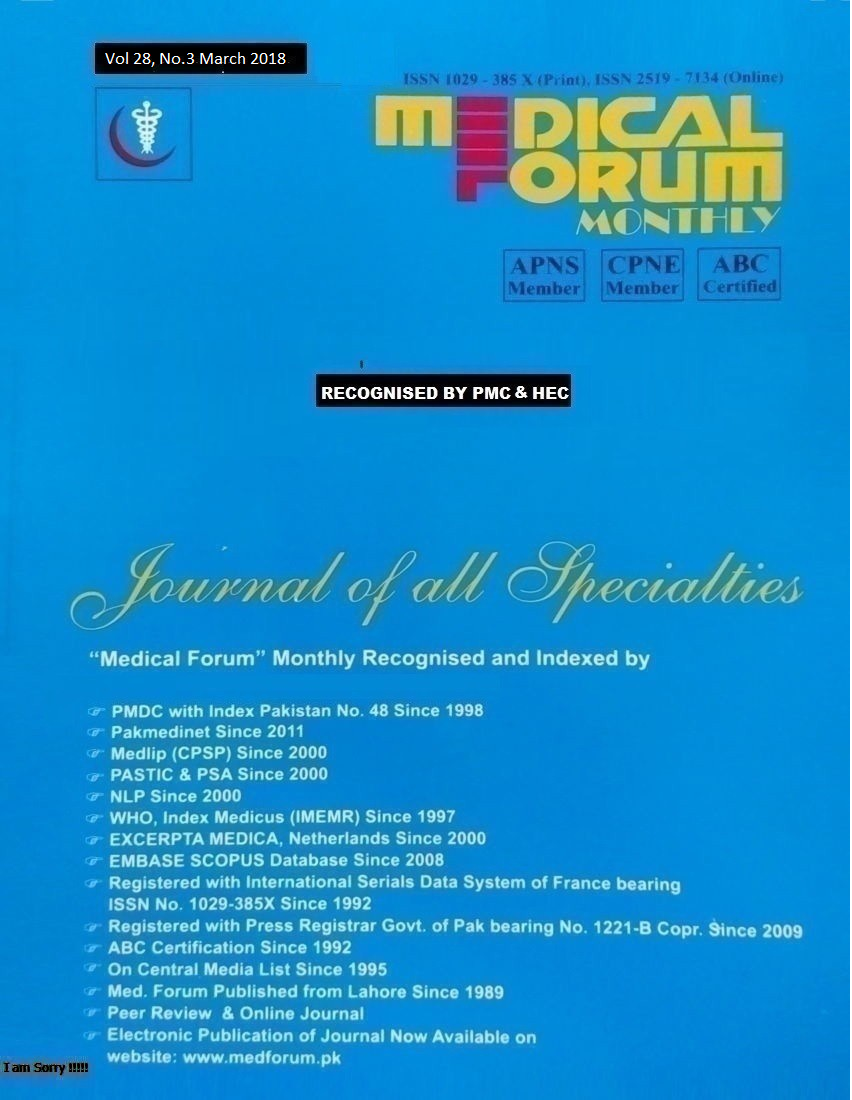
1. Sentinel Lymph Node Biopsy in Early Breast Carcinoma
Ambreen Munir, Farzana Bibi, Shiraz Shaikh, Zameer Hussain Laghari, Muhammad Rafique Pathan and Sohail Ahmed Memon
ABSTRACT
Objective: The objective of this study is to determine the success rate of sentinel node dissection and sensitivity of sentinel node to determine the presence of axillary node metastasis in women with clinically node negative breast cancer.
Study Design: Observational / descriptive study.
Place and Duration of Study: This study was conducted at the Department of Surgery, Liaquat University Hospital Jamshoro from January 2014 to December 2014.
Methods: Thirty (30) female patients admitted with biopsy proven early breast carcinoma with clinically negative axillary lymph nodes were prospectively enrolled in the study. All patients underwent complete general and local physical examination. All routine and specific investigations were carried out and after obtaining informed consent, patients were prepared for surgery. A proforma was filled-in including clinical data and all the data was analyzed on SPSS 16.0.
Results: Thirty female patients with mean age of 45.8 ± 1.10 and 60% patients having pain with lump in the breast was found in the study. The family history of breast carcinoma was found positive in 20% of cases while 26% women having history of oral contraceptives. The left breast was more frequently involved and found in 76.6% of cases. Majority of the patients (93.4%) underwent mastectomy. In 53.44% of the cases, 3 to 4 sentinel lymph nodes were detected. In postoperative histopathology, invasive ductal carcinoma was found in 46.6% of the cases with grade II was in 56.7% of the patients.
Conclusion: The sentinel node notion in breast cancer has been broadly validated & is the standard care for lymphatic staging in early breast carcinoma.
Key Words: Breast carcinoma, Sentinel node, Mastectomy
Citation of article: Munir A, Bibi F, Shaikh S, Laghari ZH, Pathan MR, Memon SA. Sentinel Lymph Node Biopsy in Early Breast Carcinoma. Med Forum 2017;28(3):2-5.
